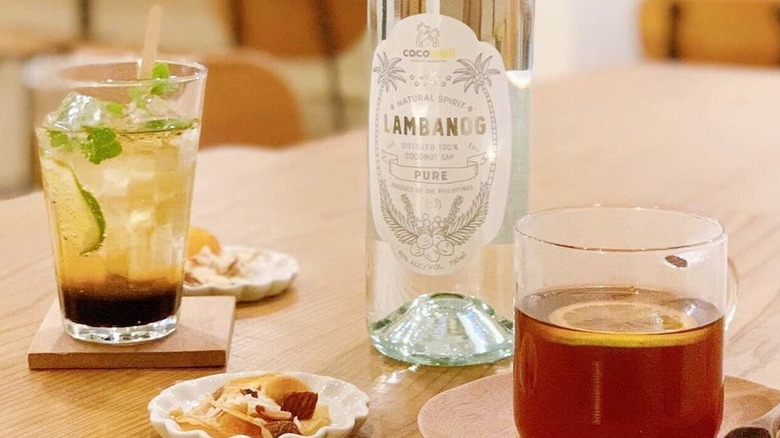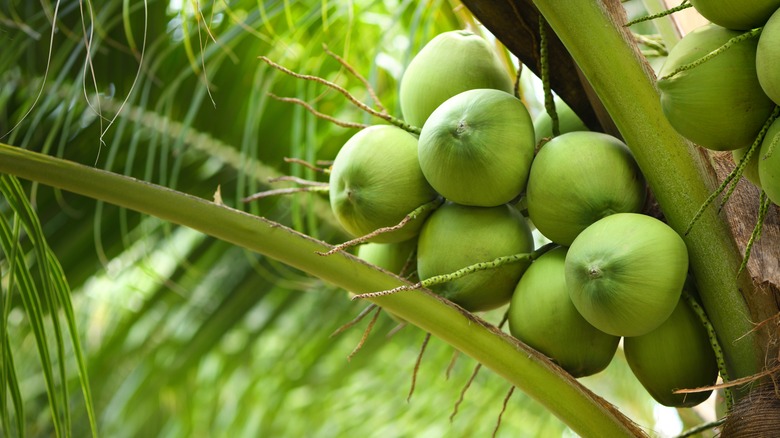What You Need To Know About Lambanog, The Strong Coconut Liquor Of The Philippines
If you believe coconuts achieve their beverage potential by providing water (or juice) known for its hydrating properties, and milk which can be used to make curries and lattes, you might want to give this fruit tree a second look. The tree's flower also produces the sap essential for making lambanog — a locally distilled spirit with an ABV of 40 to 45%. One manufacturer says the blossoms gathered up from one tree is enough to make a liter or about 33 ounces of the spirit. Liquor experts who have tried lambanog compare the beverage to vodka if it were light and sweet and fruity — which is how some have come to call this spirit "coconut vodka."
Lambanog has been around for a while — coconut farmers have been making the coconut spirit for hundreds of years in a process that is believed to pre-date the Spanish colonial occupation, which began in 1565. There is no established recipe for lambanog — coconut plantation farmers have been known to make their own versions of this strong liquor for generations.
Still, there are standards for making lambanog. The coconut sap itself is should be pearly white; it has to smell like coconut, and taste sweet for it to be added to a plastic vat for fermentation. The liquid is first turned into coconut wine also known as tuba, before it is further distilled to make lambanog.
Lambanog continues to be made the traditional way
While the Philippine government's "how to" on lambanog says the sap ferments over a four-day period, in her book "Tikim," legendary food writer Doreen Fernandez describes the process as being "spontaneous" and takes place in a matter of hours instead of days, and more experienced lambanog makers are said to "just know" when the booze is ready. Once fermentation has taken place, a two-step distillation process is carried out on a traditional stove. The highly alcoholic 110-proof first distillate is set aside, while the second, which is gathered after the liquid is cooled, becomes lambanog. If the liquid is exposed to too much heat, there is a chance that the tuba can turn into vinegar, which is why it takes experience to know much heat can be applied.
Most of the lambanog found on the market today is made in the northern Philippine province of Quezon, and its manufacture and sale is a key income earner for the areas where the spirit is made. Unfortunately, lambanog can only be made if the sap is harvested properly, and the coming of typhoons can have a negative impact on lambanog production since no sap can be extracted from distressed trees even after the weather system has passed. Lambanog can be found as a flavored liquor and is great on its own or as the alcohol base for different drinks.

